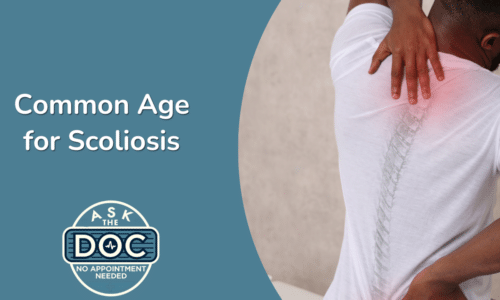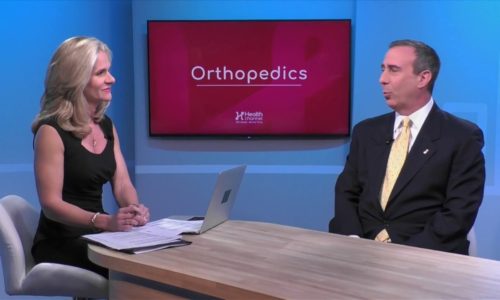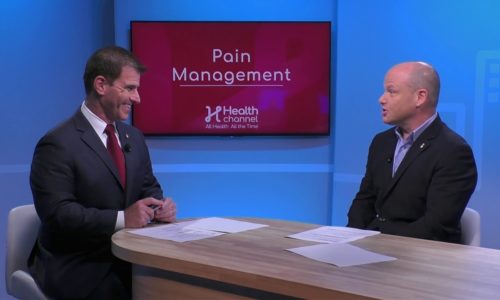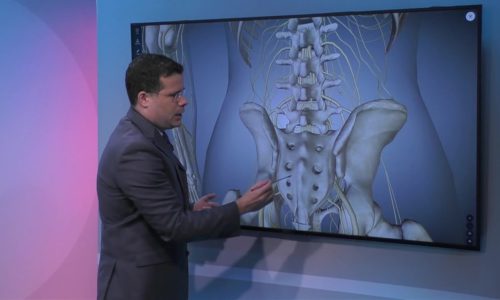What can I do for shoulder pain? |
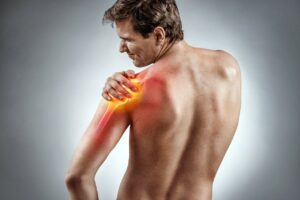
Part 2—Traumatic Shoulder Injuries
Last week, common overuse conditions of the shoulder were described along with their treatment. This week’s Health Tip describes common shoulder conditions that develop as a result of trauma. First let’s review the anatomy of the shoulder. The shoulder is made up of three bones: the upper arm bone (humerus), the shoulder blade (scapula), and the collarbone (clavicle). The head of the humerus fits into a curved socket, called the glenoid, which is part of the shoulder blade. A group of muscles and tendons, known collectively as the rotator cuff, keep the arm bone centered in the shoulder socket and allow for movement in many different directions.
In contrast to the overuse conditions discussed in last week’s Health Tip, the injuries described above sometimes require surgery to restore function and/or relieve pain.
- Rotator Cuff Tears— One of the most serious shoulder injuries involving soft tissue (muscle, tendon, ligament, etc.) is a rotator cuff tear. These may occur suddenly (acute tears) or slowly over time (chronic tears). Acute tears usually occur from a sudden jerk, as when lifting a heavy object, or from falling on an outstretched arm. Chronic tears occur most commonly in someone with longstanding “wear and tear” (degenerative) changes in rotator cuff. The primary symptoms of a rotator cuff tear are: 1) pain and weakness in the shoulder and 2) difficulty moving the shoulder, especially with overhead movements. In roughly half of people with rotator cuff tears, non-surgical treatment involving activity modification, anti-inflammatory medication, and physical therapy will restore the individual to an acceptable level of activity. If the cuff has torn completely, or the tear results in persistent pain, surgery to reattach the torn tendon back to bone may be necessary. The surgery can often be done as an outpatient, although several months of rehabilitation are usually required to regain full strength and mobility.
- Instability—Shoulder instability occurs when the structures that stabilize the shoulder joint fail to keep the ball of the upper arm bone tightly within its socket. In a shoulder dislocation, the head of the humerus comes completely out of its socket. When the head comes only part way out of the socket, it’s known as subluxation. Initial episodes of instability usually occur as a result of an injury. Severe pain and inability to move the shoulder are typically present following an acute dislocation. If the ligaments, tendons and muscles supporting the shoulder become stretched or damaged following the initial episode, chronic instability with recurrent dislocations may occur. With the first dislocation, physical therapy directed at strengthening the shoulder stabilizers is usually the best course of treatment. If the shoulder joint is so lax that repeated dislocations occur, surgery may be necessary to repair torn or stretched ligaments.
- Acromioclavicular Joint Sprain. The acromioclavicular (A-C) joint is located where the clavicle (collar bone) connects with a portion of the scapula known as the acromion. Its location is at the tip or highest point of the shoulder. The two bones forming the A-C joint are held together by ligaments. An A-C joint sprain occurs when these ligaments are stretched or torn. The common name for this injury is “shoulder separation”. A-C joint sprains and can range from a mild stretching of the ligaments that hold the joint together (Grade 1) to a complete tear of the ligaments (Grade 3-4 sprain). This injury occurs most often when someone falls directly on the point of the shoulder. Measures to reduce pain (sling, cold packs, and pain medication) along with time for healing are usually all that is required in mild sprains. When a complete tear of the A-C joint ligaments causes persistent pain or significant deformity, surgery to repair the damaged ligaments may be necessary.
- Fractures—The clavicle (collar bone) is the most commonly fractured shoulder bone. This fracture is seen most often in younger individuals, often due to landing on the shoulder as could occur during a bicycle crash. Fractures of the upper part of the arm (humerus) occur more often in older (65 years of age or older) individuals as a result of falling. The scapula is fractured less commonly that the other two bones of the shoulder and is usually the result of high-energy trauma, such as a motor vehicle accident. With each of these fractures, as long as the bone fragments are not shifted out of position (displaced), healing can occur without the need for surgery. Non-surgical treatment typically involves immobilization with a sling or shoulder immobilizer, application of ice packs, and taking medications for pain. Surgery for clavicle fractures may be necessary if a bone fragment has broken through the skin or if the bone is severely out of place. Surgery to correct a clavicle fracture may involve securing the fracture with plates and screws or by placing rods inside the bone. Surgery for a displaced fracture of the upper arm bone usually involves fixation of the fracture fragments with plates, screws, or pins. Only rarely is surgery necessary in the case of a fractured scapula.
If you have any more questions just Ask Hanna, our health advisors are here to help.
Image: ©Shutterstock / RomarioIen



